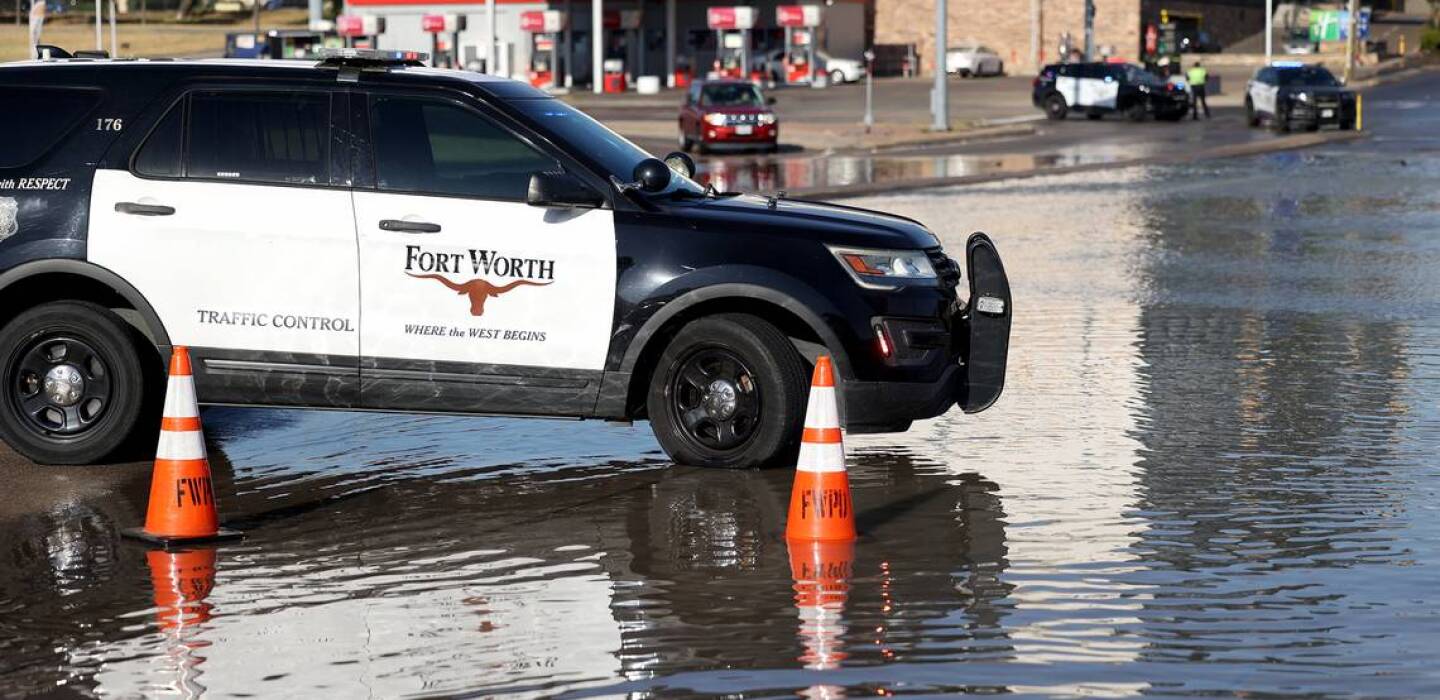
Flash Flood Warning for Dallas and Ellis Counties Today
(TNS) – An updated flash flood warning was issued by the NWS Fort Worth TX on Wednesday at 2:37 p.m.
“At 2:37 p.m., Emergency management reported multiple flooded roadways due to thunderstorms producing heavy rain across the warned area. Between 2 and 4 inches of rain have fallen. Additional rainfall amounts of 0.5 to 1.5 inches are possible. Flash flooding is already occurring,” explains the NWS. “Life threatening flash flooding of creeks and streams, urban areas, highways, streets and underpasses.”
The warning is for Dallas, Garland, Mesquite, Richardson, Rowlett, Desoto, Wylie, Lancaster, Waxahachie, Balch Springs, University Park, Sachse, Ennis, Seagoville, Glenn Heights, Red Oak, Highland Park, Hutchins Sunnyvale and Wilmer.
According to the NWS, “Turn around, don’t drown when encountering flooded roads. Most flood deaths occur in vehicles. Be aware of your surroundings and do not drive on flooded roads.”
This warning is in effect until 5 p.m.
Recommendations from the NWS for staying safe during a flood
In case you reside within a flood-prone area or are currently camping in a low-lying zone, it is crucial to promptly seek higher ground. If told to evacuate, do so immediately. Ensure your home is securely locked when vacating the premises. If time permits, disconnect utilities and appliances. Avoid entering basements or rooms with submerged electrical outlets or cords. Should you observe sparks or hear buzzing, crackling, snapping, or popping sounds, evacuate immediately. Refrain from entering water that might carry an electric current and avoid walking through floodwaters. Remember, as little as 6 inches of moving water can knock you off your feet. If trapped by moving water, seek the highest possible point and contact emergency services by calling 911.
When heavy rain occurs, there is a potential for flooding, particularly in areas that are low-lying or prone to floods. It is crucial to never drive through water on the road, even if it appears shallow. According to the NWS, as little as 12 inches of fast-flowing water can carry away most vehicles.
What to do in the rain on the road?
• Turn on headlights — Even in daylight, using headlights can help improve visibility and let other drivers know where you are.
• On the road — Drive in the middle lanes and stay on high ground. Rainwater tends to stockpile on the edges of roads.
• Keep clear of puddles — Driving through puddles or low rainwater areas can cause vehicles to hydroplane or skid out of control
• Maintain a safe distance from large vehicles — Trucks or buses can produce a water spray that hampers visibility.
• Avoid flooded zones — If you encounter a flooded road, make a U-turn and go back. The powerful currents of flash floods can carry drivers off the road. Driving through deep water can also damage a vehicle’s mechanical and electrical systems.
What is hydroplaning?
Hydroplaning is when a vehicle starts uncontrollably sliding on wet roads.
This happens when water in front of the tire builds up faster than the vehicle’s weight can push water out of the way. The water pressure then causes the vehicle to rise and slide on a thin layer of water between the tires and the road, making the driver lose control. Hydroplaning is most commonly attributed to three factors:
1. Vehicle speed — When a vehicle’s speed increases, the tire-traction grip and ability to control the vehicle decreases. Drive at a reduced speed during wet weather.
2. Water depth — The deeper the water, the sooner a vehicle loses traction on the road. It doesn’t matter how deep the water is, even a thin layer can lead to hydroplaning.
3. Tire tread depth — Checking your tire tread before hitting the road is important, as low or no tread can lead to sliding.
In the event of your vehicle hydroplaning, here’s what to know:
• Ease off the accelerator — Step off the gas to slow down the vehicle until the tires find traction.
• Turn into the skid — Turning into the skid can help the vehicle’s tires realign to regain control.
• Make sure the tires reconnect with the road — During the skid, wait until the tires reconnect with the road and then gently straighten the wheels to regain control.
• Brake gently as needed — Brake normally if the vehicle has anti-lock brakes and pump brakes gently if in an older vehicle.
Source: The National Weather Service
©2024 Fort Worth Star-Telegram. Visit star-telegram.com. Distributed by Tribune Content Agency, LLC.


Average Rating